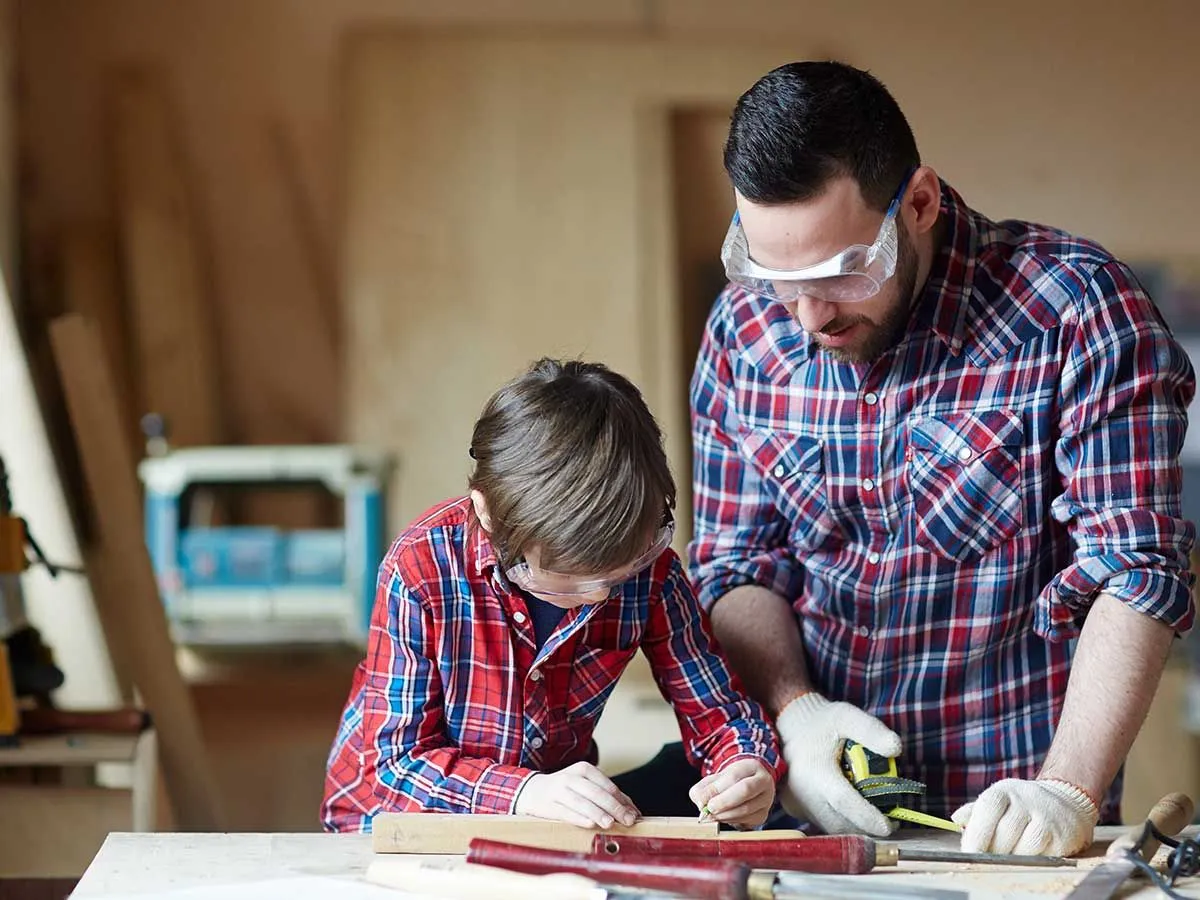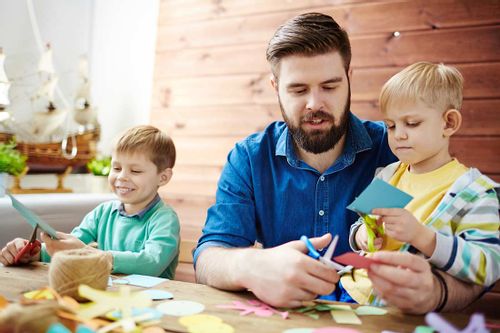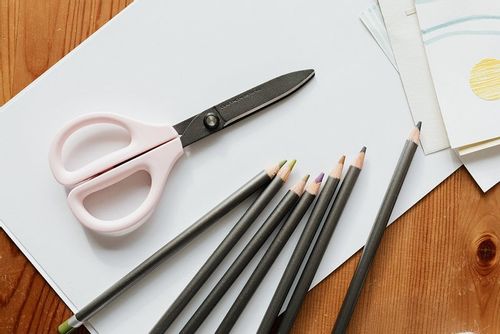FOR ALL AGES
Image © prowitt, under a Creative Commons license.
Do you want to give nature a little helping hand?
It's becoming more and more difficult for birds to find nesting spaces thanks to the loss of hedgerows and trees to make way for building sites. By putting nesting boxes for birds in your garden you could provide a safe space for birds such as blue tits to call home.
Although this activity will need to be done mostly by older kids with adult supervision, younger children can definitely get involved with the decorating. And, of course, everyone will have fun bird spotting and checking for signs of nesting once it is completed. Perhaps you could get some binoculars and a print out of popular garden birds to check which ones you can see using your brand new bird box. Why not also make a DIY bird feeder to help entice some birds to your garden? That way everyone can have some fun feeding the birds and you'll increase your chances of getting some feathered friends stopping by.
A small frost-safe terracotta pot.
A piece of wood slightly bigger than your pot.
A hammer.
Optional: A couple of short pieces of hose pipe or some wall fixings.

Image © pressfoto, freepik.com, under a Creative Commons license.
1. First, turn your pot upside down and use the round file to make the drainage hole of your chosen entrance size. (25mm for coal tits, marsh tits and blue tits, 28mm for great tits, tree sparrows and pied flycatchers and 32mm for nuthatches, house sparrows and redstarts). It might be worth finding out which are most in need of a home in your area to decide, if you're not sure, 32mm is a good size to go with.
2. Place your piece of wood on the floor and put your pot on top, with the rim facing down and the entrance hole facing out. Place four nails on the wood, evenly spaced around the outside of rim of the pot, these will be used to hold the pot in place. Hammer the nails about half way into the wood so the tops are sticking out.
3. Twist the wire around the first nail a few times and then around the base of the pot to hold it securely in place. Repeat using the wire on the other nails until the wire is wrapped around each nail as well as the pot, several times. To check that the pot and wood are firmly attached to each other, carefully try hooking your finger in the entrance hole and lifting the whole thing up.
4. Find a quiet, sheltered location in your garden to put up your nest box. If you are going to attach the bird box to a tree, you can use wire. This means that you can adjust the wire as the tree grows and it won't cause any dents. If you wrap the wire in some garden hose it also will protect the tree from damage. If you are attaching the box to a shed you will need to secure it using screws, ideally, you want to be able to remove the nesting box easily to clean it. Make sure the bird box is secure and will not fall off.
5. Ideally, the bird box should face northeast to avoid strong sunlight and be as high as you can safely put it, two to five metres high is a good aim. Keep it out of the path of cats who are likely to disturb your guests and perhaps cause them to abandon their bird nest.

Image © pressfoto, freepik.com, under a Creative Commons license.
Using a frost-proof terracotta pot will reduce the risk of predators chewing a hole in the bird box and will also prevent it from cracking in the winter.
If you fancy decorating your bird box, be sure to use water based paints which aren't toxic to birds. You could even try using organic, eco-friendly paints which are kind to the environment as well as the birds. Muted, natural colours make the best choice as they will blend in with the surroundings.
For the best chance of attracting birds to nest, make your garden an enticing environment. Include lots of plants to provide shelter and fruit, which will attract insects, as well as some water (a pond or bird bath), as this will make it easy for the birds to access all they need safely.
Don't position your bird box somewhere busy like near a feeding table because this can disturb your guests.
Keep the entrance hole to your nesting box clear so that birds can scan for predators.
Try to position your bird box out of the path of artificial light as this can disturb the birds' natural circadian rhythms.
The best time of year to put your box up is before spring, as this is when birds will be looking for somewhere to nest.
You don't need to put anything in your nest box as the birds will do this themselves.
It is best to watch the birds coming and going from the window so as not to disturb them. You could use some binoculars to get a good view.
It can take a while for your box to be found, so don't give up hope if no one moves in quickly. If however, after three years you've still had no guests, it might be worth moving your nest box for birds to a different location.

Image © pressfoto, freepik.com, under a Creative Commons license.
Between bird nesting, it's a good idea to give your box a clean. Simply take it down and give it a scrub with boiling hot water. Do not use cleaning products as these could be toxic to wildlife. This a definitely a job for adults, it's also a good idea to wear a mask and gloves whilst cleaning as there may be a build up of fungi and parasites. To be sure your box is empty and ready for cleaning it's best to wait until winter. Most birds nest between March and September but some do go on longer. Keep an eye on the bird box over a few days to make sure there is nothing going out or in any more before taking it down to clean.
Depending on the size of your bird box and its' entrance hole, these are some of the visitors you can expect to see.
Blue Tits: A blue tit is possibly the most easily recognisable bird thanks to its beautiful bright yellow, blue, white and green colouring.
Coal Tits: These garden visitors have a grey back with a black cap and a white neck.
Great Tits: These are the largest tits in the UK and are green and yellow with a black and white head.
House Sparrows: Males have a black chin and bib whereas females are shades of brown.
Tree Sparrows: Smaller than house sparrows, a tree sparrow has a brown cap and white cheeks with a black spot.
Nuthatches: These woodpecker resembling birds are blue-grey on top, with a black stripe on their face and a long, pointed bill.
Redstarts: Identifiable by their bright orange tails, males have grey heads, black faces and orange chests.
Read The Disclaimer
At Kidadl we pride ourselves on offering families original ideas to make the most of time spent together at home or out and about, wherever you are in the world. We strive to recommend the very best things that are suggested by our community and are things we would do ourselves - our aim is to be the trusted friend to parents.
We try our very best, but cannot guarantee perfection. We will always aim to give you accurate information at the date of publication - however, information does change, so it’s important you do your own research, double-check and make the decision that is right for your family.
Kidadl provides inspiration to entertain and educate your children. We recognise that not all activities and ideas are appropriate and suitable for all children and families or in all circumstances. Our recommended activities are based on age but these are a guide. We recommend that these ideas are used as inspiration, that ideas are undertaken with appropriate adult supervision, and that each adult uses their own discretion and knowledge of their children to consider the safety and suitability.
Kidadl cannot accept liability for the execution of these ideas, and parental supervision is advised at all times, as safety is paramount. Anyone using the information provided by Kidadl does so at their own risk and we can not accept liability if things go wrong.
Kidadl is independent and to make our service free to you the reader we are supported by advertising.
We hope you love our recommendations for products and services! What we suggest is selected independently by the Kidadl team. If you purchase using the buy now button we may earn a small commission. This does not influence our choices. Please note: prices are correct and items are available at the time the article was published.
Kidadl has a number of affiliate partners that we work with including Amazon. Please note that Kidadl is a participant in the Amazon Services LLC Associates Program, an affiliate advertising program designed to provide a means for sites to earn advertising fees by advertising and linking to amazon.
We also link to other websites, but are not responsible for their content.
Was this article helpful?



Browse Category



We’ll send you tons of inspiration to help you find a hidden gem in your local area or plan a big day out.



Check your inbox for your latest news from us. You have subscribed to:
Remember that you can always manage your preferences or unsubscribe through the link at the foot of each newsletter.